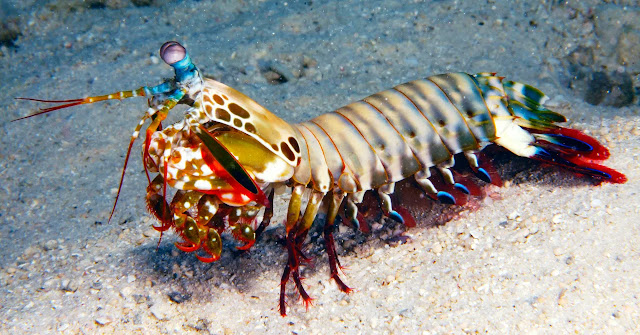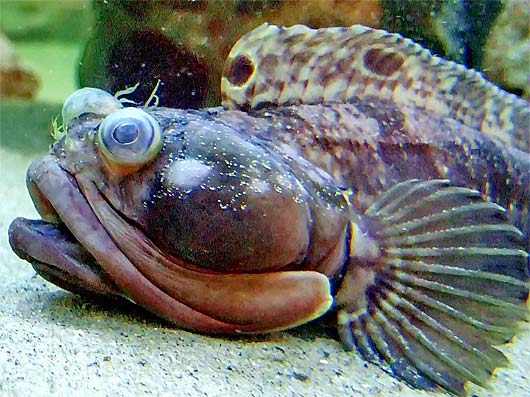The diversity of life on Earth is truly astonishing, and the animal kingdom is filled with creatures that defy our expectations and challenge our understanding of the natural world. In this article, we'll introduce you to five weird animals from around the world, each with its unique set of features and adaptations that make it stand out. From the depths of the ocean to the remote forests, these animals showcase the incredible variety of life on our planet.
Aye-Aye (Daubentonia madagascariensis)
The aye-aye is a peculiar primate found only on the island of Madagascar. Its most distinctive feature is its elongated, bony middle finger, which it uses to tap on trees to locate grubs and insects hiding beneath the bark. Despite its large, lemur-like eyes and bushy tail, the aye-aye's odd appearance has led to superstitions in Madagascar, with some believing it to be a harbinger of bad luck.
- Habitat: Rainforests of Madagascar.
- Diet: Insects, larvae, and tree sap.
- Unique Feature: The aye-aye's middle finger is incredibly specialized for its foraging technique.
Axolotl (Ambystoma mexicanum)
The axolotl, often referred to as the "Mexican walking fish," is not actually a fish but a type of salamander. What makes it truly bizarre is its ability to regenerate lost body parts, including limbs, spinal cord, and even parts of its brain. This remarkable regenerative ability has made axolotls a subject of scientific interest.
- Habitat: Originally found in the Xochimilco lake system in Mexico.
- Diet: Aquatic invertebrates and small fish.
- Unique Feature: Extraordinary regenerative capabilities.
Star-Nosed Mole (Condylura cristata)
The star-nosed mole, native to eastern North America, is instantly recognizable by its unusual snout. It has 22 fleshy appendages surrounding its nostrils, resembling a star-shaped structure. These appendages are incredibly sensitive to touch, allowing the mole to navigate in total darkness and locate prey by touch alone.
- Habitat: Wet lowland areas in North America.
- Diet: Insects, small invertebrates, and aquatic prey.
- Unique Feature: The star-shaped nose with super-sensitive touch receptors.
Read also: Interesting Fun Facts about Horses
Platypus (Ornithorhynchus anatinus)
The platypus, a native of Australia, is often referred to as a "duck-billed platypus" due to its distinctive bill. It's one of only a few mammals that lay eggs, and it's also one of the very few that are venomous. Male platypuses have a spur on their hind legs capable of delivering painful venom to potential threats.
- Habitat: Freshwater rivers and streams in Australia.
- Diet: Aquatic invertebrates.
- Unique Feature: Egg-laying, duck-like bill, and venomous spur in males.
Dumbo Octopus (Grimpoteuthis spp.)
The dumbo octopus is a deep-sea dweller, living at depths of up to 7,000 meters (23,000 feet). It's named after its prominent ear-like fins that resemble the ears of Disney's Dumbo the elephant. These fins allow it to gracefully navigate the ocean's abyss.
- Habitat: Deep-sea environments worldwide.
- Diet: Small crustaceans, jellyfish, and other deep-sea prey.
- Unique Feature: Ear-like fins and deep-sea adaptation.
Naked Mole Rat (Heterocephalus glaber)
The naked mole rat is a highly unusual rodent native to East Africa. What sets it apart is its nearly hairless, wrinkled appearance and its eusocial behavior, similar to ants and bees. These creatures live in underground colonies with a single reproductive queen and are known for their longevity, resistance to cancer, and insensitivity to pain.
- Habitat: Underground tunnels in arid regions of East Africa.
- Diet: Underground plant parts and tubers.
- Unique Features: Hairless, eusocial behavior, longevity, and cancer resistance.
Mantis Shrimp (Stomatopoda)
Mantis shrimps are marine crustaceans known for their strikingly colorful appearance and incredibly powerful appendages. They have the ability to strike prey with the speed of a bullet and can break through glass aquarium walls. Additionally, they possess some of the most complex and highly developed eyes in the animal kingdom.
- Habitat: Tropical and subtropical marine waters.
- Diet: Fish, crabs, and other small marine creatures.
- Unique Features: Powerful claws for striking, exceptional vision, and vibrant colors.
Sloth (Family Bradypodidae and Megalonychidae)
Sloths are known for their slow and deliberate movements, often spending their entire lives in trees. They have an extraordinarily low metabolic rate and sleep for up to 15 hours a day. Additionally, some species of sloths have a symbiotic relationship with algae, which gives their fur a greenish tint.
- Habitat: Rainforests of Central and South America.
- Diet: Leaves, twigs, and occasionally fruit.
- Unique Features: Slow-moving, low metabolic rate, and algae-covered fur.
Leaf-Tailed Gecko (Uroplatus spp.)
Leaf-tailed geckos are masters of camouflage, blending seamlessly with their rainforest habitats in Madagascar. Their flat, leaf-like tails and body shape make them virtually invisible to predators and prey alike. They have evolved to match the color and texture of leaves and bark.
- Habitat: Rainforests and forests of Madagascar.
- Diet: Insects and small invertebrates.
- Unique Features: Leaf-like appearance, exceptional camouflage.
Pink Fairy Armadillo (Chlamyphorus truncatus)
The pink fairy armadillo is the smallest and arguably the cutest member of the armadillo family. It is native to Argentina and is known for its pinkish, armor-like shell and large front claws, which it uses for digging and burrowing. This nocturnal creature spends most of its life underground.
- Habitat: Sandy plains and grasslands of Argentina.
- Diet: Insects and plant matter.
- Unique Features: Pink shell, burrowing lifestyle, and small size.
Narwhal (Monodon monoceros)
The narwhal is a medium-sized toothed whale known for its long, spiral tusk that can reach lengths of up to 10 feet. These elusive creatures inhabit the Arctic waters of Canada, Greenland, Russia, and Norway, and their tusks have led to numerous myths and legends throughout history.
- Habitat: Arctic seas and deep fjords.
- Diet: Fish, squid, and other small marine creatures.
- Unique Features: Long, spiral tusks and Arctic habitat.
Mimic Octopus (Thaumoctopus mimicus)
The mimic octopus is a master of disguise found in the waters of Southeast Asia. It can imitate the appearance and behavior of various toxic marine animals, such as lionfish and sea snakes, to deter potential predators. This remarkable ability to mimic other species is a defense mechanism against predation.
- Habitat: Shallow, sandy seabeds in the Indo-Pacific.
- Diet: Crabs, small fish, and other marine invertebrates.
- Unique Features: Mimicry of other marine animals, camouflage abilities.
Sunda Flying Lemur (Galeopterus variegatus)
Despite its name, the Sunda flying lemur is not a lemur, nor can it truly fly. This gliding mammal is native to Southeast Asia and is known for its extensive patagium, a membrane that allows it to glide gracefully from tree to tree in search of food. It's one of the few mammals capable of powered flight without wings.
- Habitat: Forested areas of Southeast Asia.
- Diet: Leaves, fruits, and flowers.
- Unique Features: Gliding membrane, webbed hands and feet.
Blue Dragon Sea Slug (Glaucus atlanticus)
The blue dragon sea slug, also known as the "blue sea dragon," is a small but strikingly colored marine creature found in warm ocean waters. It is a type of nudibranch, a shell-less mollusk, and feeds on Portuguese man o' war jellyfish. What makes it peculiar is its vivid blue and silver coloration and its ability to deliver a painful sting due to its consumption of venomous prey.
- Habitat: Open ocean, often found drifting on the surface.
- Diet: Portuguese man o' war and other cnidarians.
- Unique Features: Vivid blue and silver coloration, ability to store and use stinging cells from its prey.
Sarcastic Fringehead (Neoclinus blanchardi)
The sarcastic fringehead is a small but incredibly aggressive fish found in the Pacific Ocean. When threatened, these fish display their bizarre behavior by opening their large mouths wide, revealing rows of sharp teeth, in a fierce territorial display. They often take up residence in discarded shells or other small crevices.
- Habitat: Subtropical and temperate waters of the Pacific Ocean.
- Diet: Small fish, crustaceans, and other small marine life.
- Unique Features: Aggressive territorial behavior, bizarre mouth displays.
Nudibranchs (Various species)
Nudibranchs are a group of colorful and captivating sea slugs found in oceans worldwide. They come in a wide range of shapes and colors and are known for their remarkable and often otherworldly appearances. Nudibranchs are hermaphrodites, possessing both male and female reproductive organs.
- Habitat: Oceans and seas, often in coral reefs.
- Diet: They feed on various marine creatures, including sponges, sea anemones, and hydroids.
- Unique Features: Colorful, intricate shapes, and hermaphroditic reproduction.
African Shoebill (Balaeniceps rex)
The African shoebill is a large bird native to the wetlands and swamps of tropical central tropical Africa. What makes it particularly strange is its enormous shoe-shaped bill, which can be up to 9 inches long. They are known for their slow and deliberate movements while hunting for fish, frogs, and reptiles.
- Habitat: Wetlands, swamps, and marshes in central tropical Africa.
- Diet: Fish, amphibians, and reptiles.
- Unique Features: Large, shoe-shaped bill and slow hunting behavior.
Red-Lipped Batfish (Ogcocephalus darwini)
The red-lipped batfish is a peculiar fish found around the Galapagos Islands and off the coast of Peru. It gets its name from its bright red, plump lips, which are believed to attract prey. This unusual fish is not a strong swimmer and often "walks" along the ocean floor using its modified pectoral fins.
- Habitat: Deep waters around the Galapagos Islands and Peru.
- Diet: Small invertebrates and marine organisms.
- Unique Features: Bright red lips, modified pectoral fins for walking.
Markhor (Capra falconeri)
The markhor is a species of wild goat found in the mountains of Central and South Asia. What sets it apart is the distinct spiral horns, which can grow to impressive lengths and are highly sought after by poachers. The name "markhor" means "snake eater" in Persian, though their diet mainly consists of vegetation.
- Habitat: Mountainous regions in Central and South Asia.
- Diet: Grasses, leaves, and other vegetation.
- Unique Features: Spiral horns and adaptation to high-altitude terrain.
African Egg-Eating Snake (Dasypeltis scabra)
The African egg-eating snake is known for its unusual feeding habits. As the name suggests, this snake primarily eats bird eggs. Its specialized anatomy includes flexible jaws and backward-pointing teeth for cracking open and consuming eggs, without the need to constrict its prey.
- Habitat: Various habitats across sub-Saharan Africa.
- Diet: Bird eggs.
- Unique Features: Specialized jaw and teeth for egg consumption.






















.jpg)






0 Comments